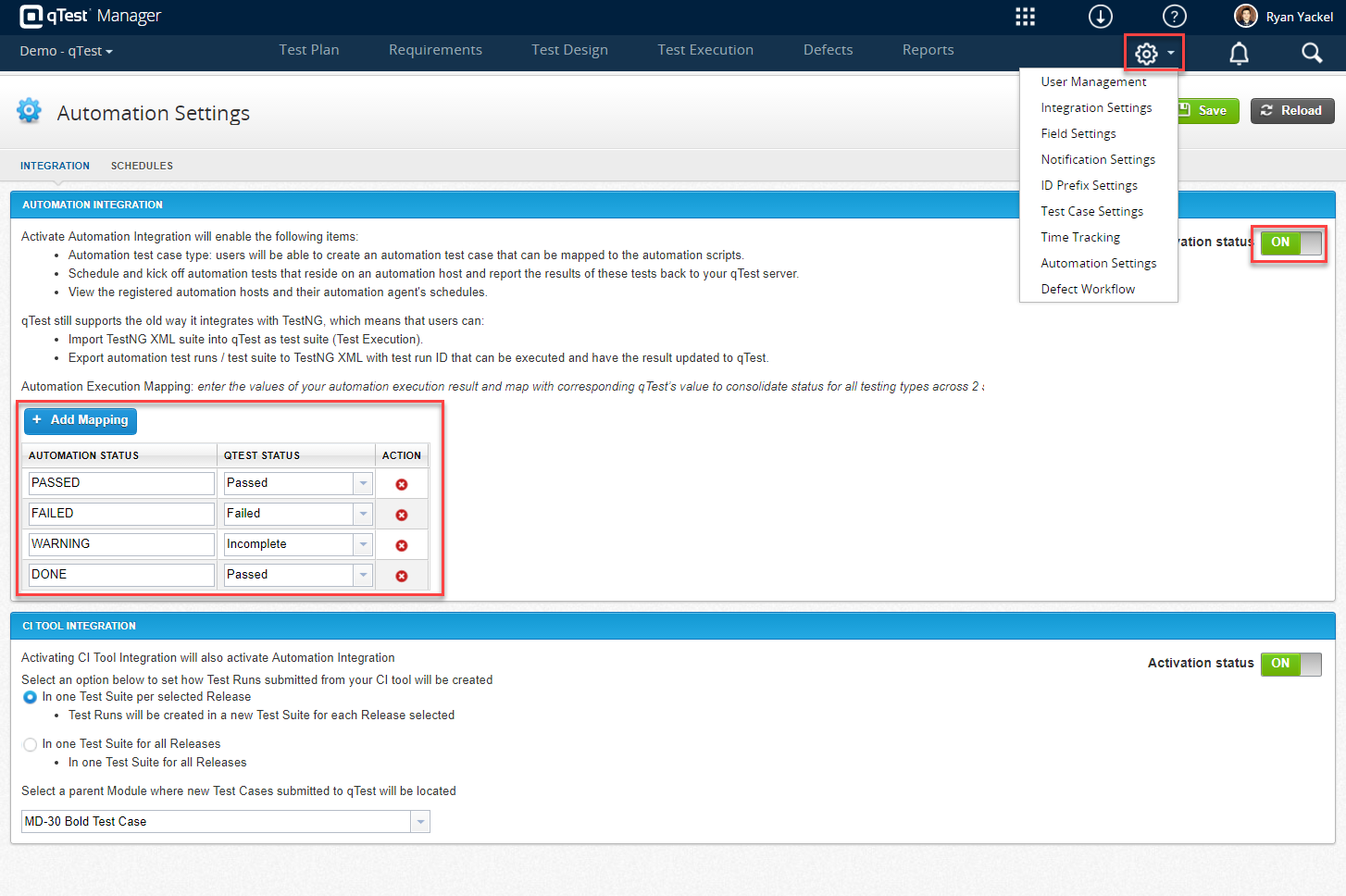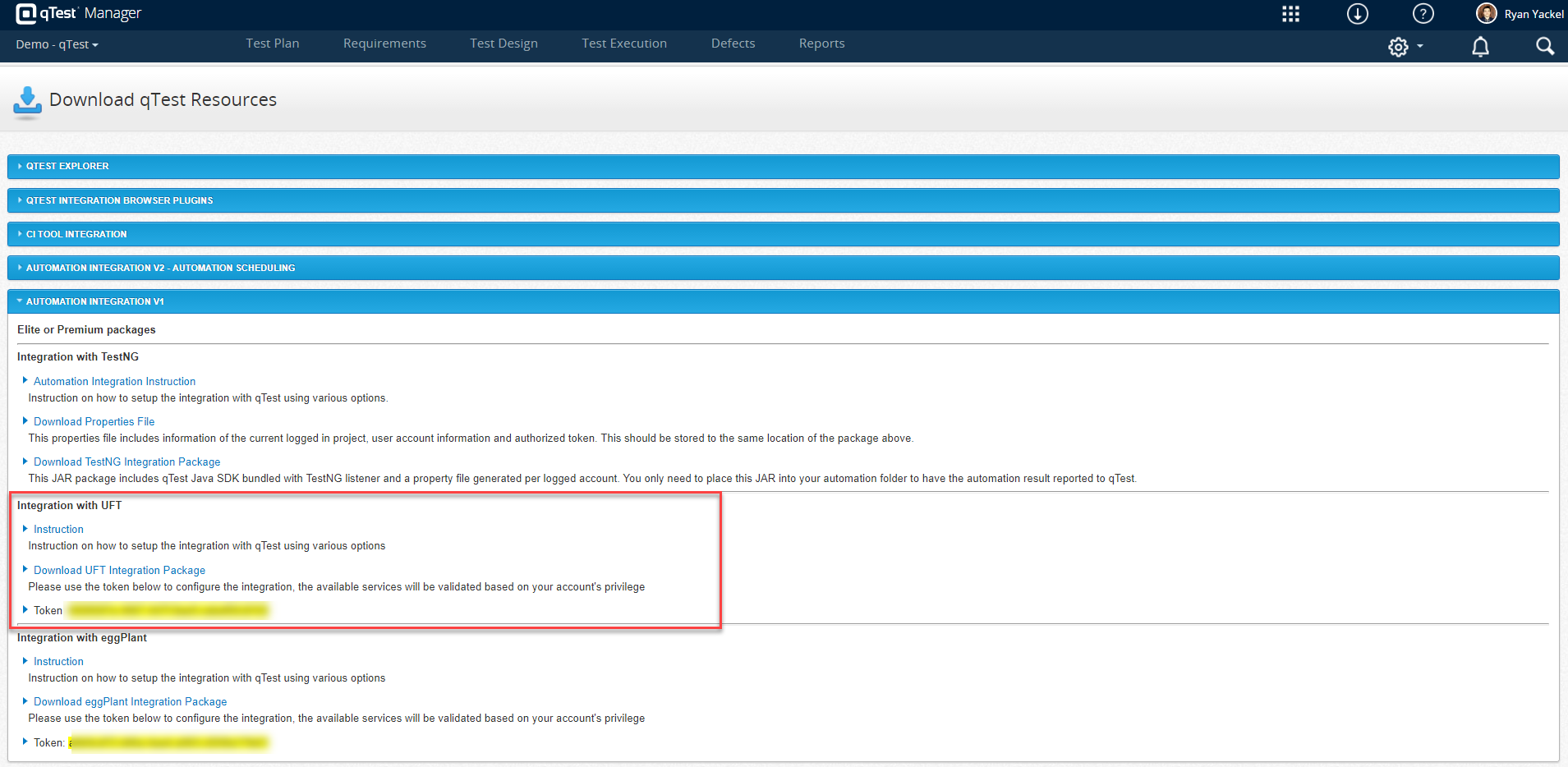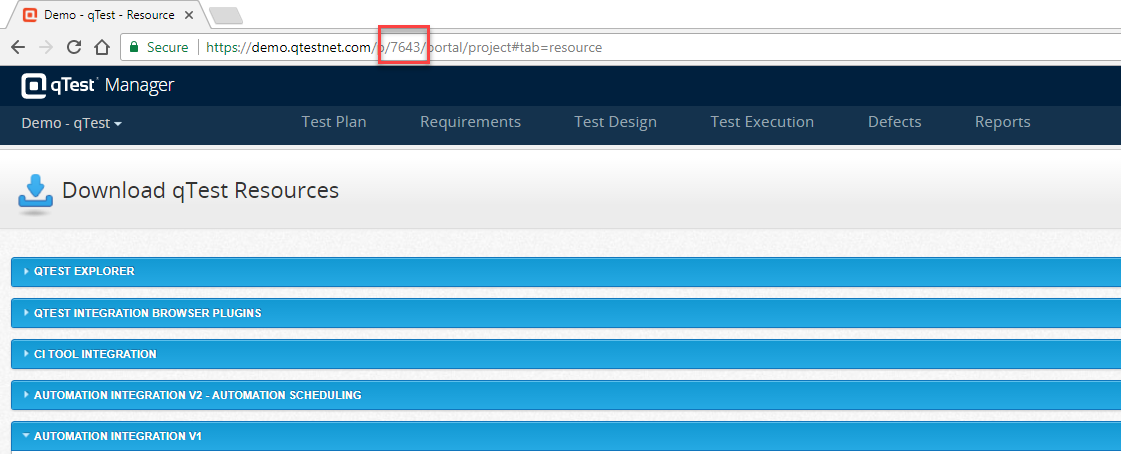UFT Integration (Legacy)
The legacy integration described in this article follows the approach previously known as "Automation Integration V1" to pass in execution results to qTest Manager Test Execution using a command line tool that can kick off UFT scripts which reside on your local machine to report the results back to qTest Manager.
With this legacy approach, automation Test Cases and Test Runs are automatically created in qTest Manager so you will not need to manually create them.
IMPORTANT:
-
The UFT and the UFT Integration tool must be installed on the same machine in order for the UFT Integration tool to kick off UFT scripts.
-
The integration tool works with UFT v12.52.
To setup and use this integration, see the instructions below.
Enable Automation Integration Settings in qTest
To receive test results submitted by the UFT Integration tool, you need to activate the Automation Integration feature in your qTest Manager project.
-
Access your qTest Manager project, click on the Gear icon and select Automation Settings. Switch the Activation Status to ON.
-
Map the automation execution results with the corresponding qTest Manager values. Map the UFT test results with the corresponding execution status in qTest Manager. The default UFT results include:
PASSED
FAILED
WARNING
DONE
-
Click the Save button.

Download UFT Integration Package
Download the UFT Integration Package from the qTest Resources page.
-
Access the qTest Resources page from within your qTest Manager project.
-
Download the qTestuft.exe file.

Review arguments from the console
After you download the UFT Integration Package .exe file, open the Console and execute this command to see all available arguments.
qTestuft.exe -h

| Argument | Required | Value/Description |
|---|---|---|
|
-u --qTest-url |
Yes | URL to access to your qTest Manager instance. |
|
-t --token |
Yes |
Token to login to your qTest instance. You can get the token from the qTest Resources page.
|
|
-p --project-id |
Yes |
ID of the qTest project to which you want to report test execution results to. You can get the project ID from its URL or from the Site Administration Projects page.
|
|
-s --test-suite-id |
No |
When test results are submitted to qTest Manager, Test Runs are automatically created in qTest Manager if they do not already exist. You can specify a qTest Manager Test Suite where the submitted Test Runs will be located using its ID or PID. If it is omitted, one Test Suite is created per execution date to contain the Test Runs. If the UFT tests are executed multiple times in one day, all Test Runs are located in the same Test Suite of that day. The Test Suite is named as UFT yyyy-mm-dd, where yyyy-mm-dd is the execution date, and it is located under the Test Execution tree's root. |
|
-d --execution-date |
No |
Specify an execution date in the form yyyy-mm-dd which will be used in the default Test Suite name. If it is omitted, qTest Manager will used the test log submitted date to create the Test Suite. |
|
-m --module-id |
No |
When test results are submitted to qTest Manager, Test Cases are automatically created in qTest Manager if they do not already exist. All eggPlant Test Cases are located under the UFT Automation module located under the Test Design tree's root. If you specify a parent module using its PID or ID, the UFT Automation module will be created under the parent module. |
| <folder ...> | Yes | Directories in which UFT tests are located. You can specify multiple directories, separated by a blank space. You can use a wildcard to specify multiple directories
|
|
-S --save-config |
No | Save the configuration specified in the above arguments in the config.ini file which is located under the same directory as qTestuft.exe. You can re-use the configurations in the next execution without specifying them via arguments. |
Execute UFT Integration Tool
-
From the Console, execute qTestuft.exe and pass in configurations for required arguments.
-
Submission progress is logged in the console, so you can monitor it.

-
After the submission is completed, you can access your qTest Manager project to verify if Test Cases and Test Runs have been created.
NOTE:
-
Configurations can be defined in either the configuration file or via command line arguments. If the same configuration is defined in both places, the UFT Integration tool will use the configurations in the command line arguments.
-
One UFT test is created as one Test Case in qTest Manager, and its actions are created as Test Steps.

